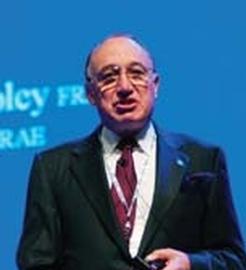There are communication breakdowns all over the industry. The one between the design profession and facilities managers, for example, means the people who run buildings have little idea how those buildings were set up and how they are supposed to work. This leaves the occupants with excessively high energy consumption and inadequate comfort conditions.
Lack of communication leads to misunderstanding of responsibilities and we end up with fuzzy areas between the professions. And into these areas lots of essential design information falls during projects – and that info is lost forever, creating major problems with the finished building.
It is as serious as that. It's all too easy to dismiss communication as a 'soft' issue, but it is a fundamental weakness that undermines everything we are trying to achieve. Until we fully understand each other and complete the communication loop, we won't be able to solve the bigger problems of the world associated with climate change.
The CIBSE/ASHRAE conference in Edinburgh, which was attended by 780 engineers, manufacturers and architects, took on some of the world's biggest problems. CIBSE president Terry Wyatt spoke powerfully about the growing threat of climate change.
Subjects don't come much bigger than that, but I feel it is in the detail that we need to start addressing these issues.
During the conference, both presidents (myself and Terry) along with our wives were fortunate to enjoy the facilities of one of Edinburgh's very finest hotels. One evening, while having a drink in the bar, we were forced to move tables because of a ceiling cassette 'dumping' cold air on our heads.
The presidents of the world's foremost building services organisations couldn't enjoy a quiet drink with their wives because the air conditioning had been shoddily designed. We need to get the detail right before we have any hope of addressing the big planetary issues and communication is right at the heart of that.
The conference was very successful in attracting architects – which is a positive sign – and one of the star speakers was the past-president of the Royal Institution of British Architects, Paul Hyett.
He told the conference that the responsibility on our generation is "absolutely awesome". We are the first generation that is knowingly making the climate worse – our predecessors at least had the excuse of not knowing what they were doing.
He and I both believe that there is a strong ethical argument that architects and engineers should not be licensed for life. The medical profession is addressing this matter now, and so should our industry. If architects and engineers do not offer their clients the most sustainable option when designing their building – they should not be allowed to practice.
Bridging the gap
We heard a number of theories for bridging the communication gap between the design team and the people whose job it is to manage the finished building. The problem is that few facilities managers have any idea how the building was set up and how to get the best out of it in terms of energy efficiency and comfort for the occupants. This led Phil Jones of Building Energy Solutions to dismiss most of our existing buildings as "rubbish".
Jones believes the answer lies in better documentation given to facilities managers at handover in the shape of building logbooks, now part of the requirements of Part L2 of the Building Regulations.
These should be prepared by the design team and include a summary of information about the building systems and how they are supposed to work.
It was a great conference with good input from all the professions and from both sides of the Atlantic – and we have started to communicate.
Source
Building Sustainable Design
Postscript
Richard Rooley is the first ever non-North American president of the American Society of Heating, Refrigerating and Air conditioning Engineers (ASHRAE).
Visit: www.ashrae.org.























No comments yet